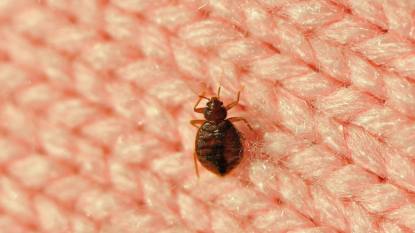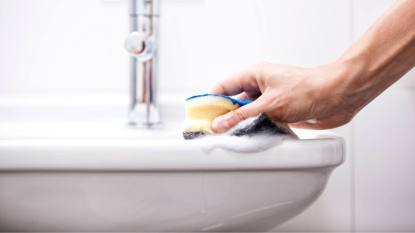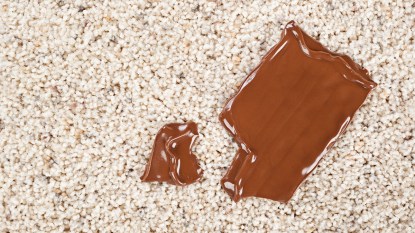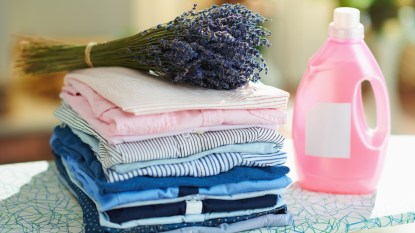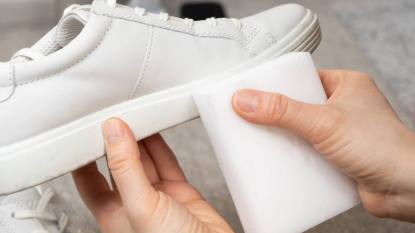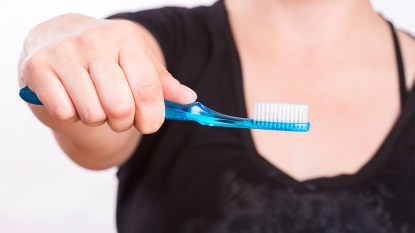Study: The Average Reusable Water Bottle Is Dirtier Than a Toilet Seat — How to Get Yours Clean
It only takes a few minutes — and you can use pantry staples to get the job done!
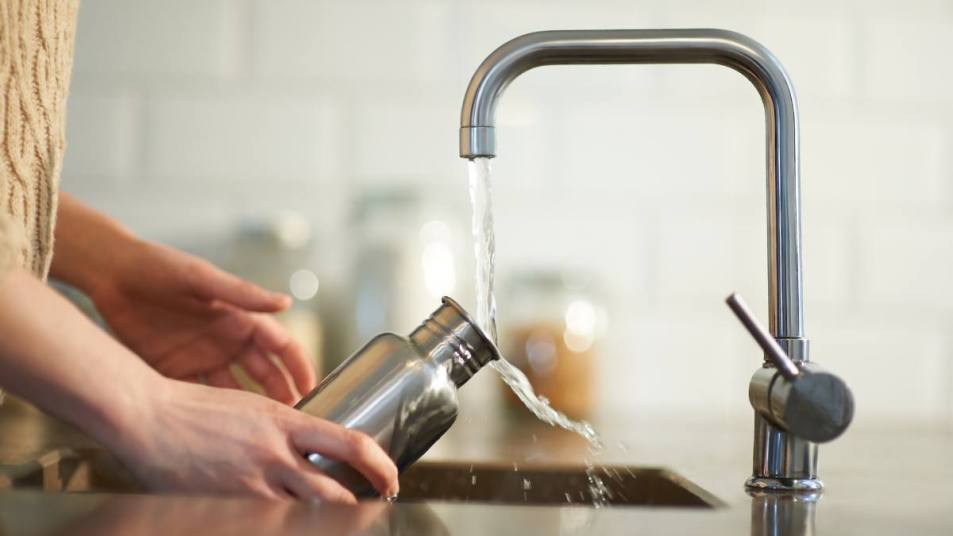
These days, everywhere we go we see people toting reusable water bottles like a fashion accessory. And while the eco-friendly fad encourages people of all ages to drink more water — a great habit for health and weight loss— you could also unknowingly ingest harmful bacteria in the process. Read on for expert advice on how to clean reusable water bottles.
Why it’s important to clean a reusable water bottle
A 2022 independent study found that the average reusable water bottle contains 40,000 times more bacteria than a toilet seat. A quarter of study subjects washed their water bottles only a few times a week, and one in five cleaned them a few times a month.
“While glass and stainless steel are a better choice than chemical-laden plastic cups and bottles, when left to sit around, all are breeding grounds for bacteria,” says New York-based nurse practitioner Kristen Bernockie, FNP-C.
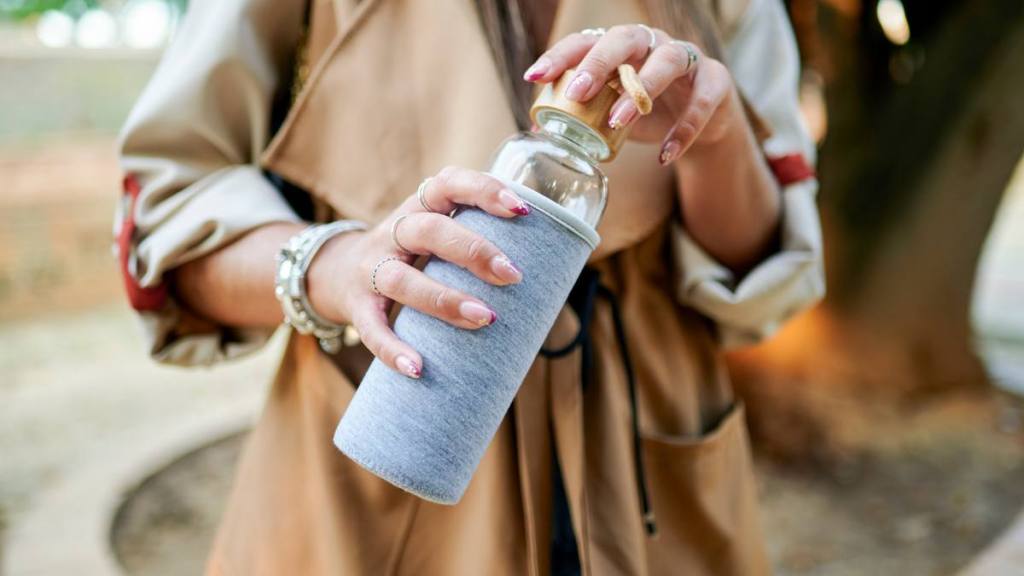
“For a majority of tumblers, the lid and its seal components allow for water and other moisture from your beverage to accumulate in the crevices. This fosters the growth of mold, gunk and bacteria in areas that most people tend to overlook,” says Katie Dills, brand president of The Cleaning Authority.
“Our immune systems have the innate ability to fight off a lot of this stuff,” says Patrick Nuzzo, DN. “And some would say it’s a good thing for it to fight germs, but you still need to sanitize all parts of the bottle daily.” That’s especially true if you’re toting yours to germ-laden spots like the gym or if it’s been sitting dormant somewhere (like your car or your purse). (Click through to learn how staying hydrated helps ward off age-related muscle loss.)
So how should we be cleaning our Stanleys and such? Read on to find out exactly how to keep our precious cups germ-free.
What type of reusable water bottle should we look for?
Reusable water bottles come in various materials, the most popular being plastic, stainless steel or glass. Sometimes, your bottle will be stainless steel or glass but have a plastic top or straw.
“Plastic water bottles are filled with microplastics and other chemicals that can leach into the water we consume. Soo it’s critical to look for high-quality stainless steel bottles that are free of BPA and phthalates,” says Gina Dardi, creator of the momjug, a reusable water jug designed for pregnant and nursing moms.
The bottle top matters too. When the team at TreadmillReviews swabbed the lids of four main types of reusable bottles (squeeze top, screw top, slide top and straws) and had them analyzed at an independent lab, they found that squeeze top and screw tops were the worst offenders when harboring harmful bacteria. “The cover tab on the top of the lid is meant to reduce spills, but you’d be surprised at the mold you can find under that small piece,” says Dills.
When choosing a bottle that’s easier to maintain, “look for one with a large opening, making it easy to get inside,” advises Dardi. “A narrow mouthpiece makes cleaning in the dishwasher or by hand much harder. Also avoid overly complicated mouthpieces that can trap mold in tough-to-clean spots.” (Click through to learn how drinking more water can ward off tiredness from Ozempic.)
How often should we clean our reusable water bottle?
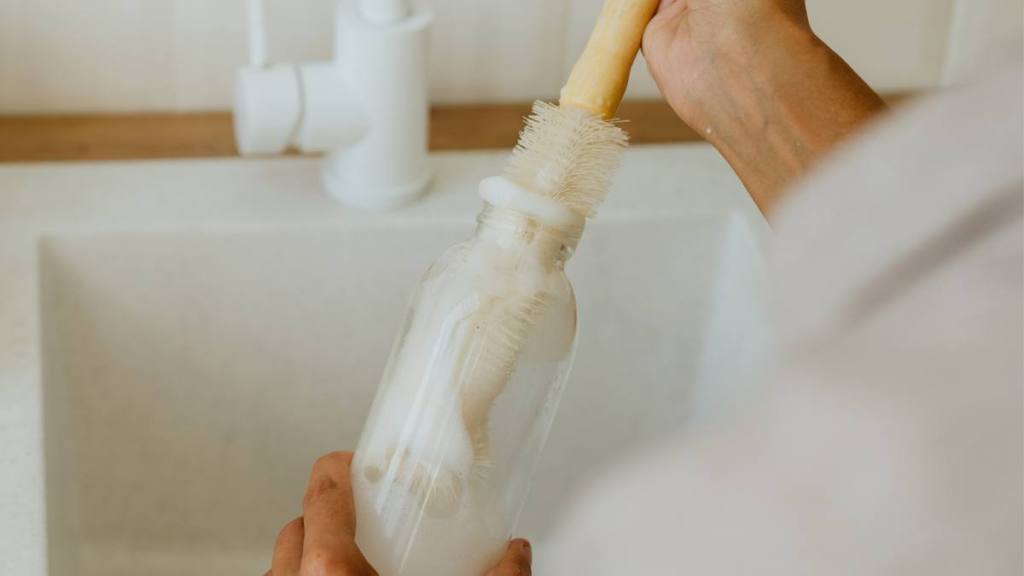
So, how often do we need to be cleaning our reusable bottles? Regardless of any odors or whether or not it looks dirty, Dr. Nuzzo says you should be washing them every single day. “You wash your forks and knives after you use them. It’s the same with the bottles, even if you’re just filling them with water,” he explains.
“Depending on where you store it, how often you touch it with your lips, fingers and other things, bacteria can collect very quickly,” he adds.
How to clean a reusable water bottle
The top rack of the dishwasher is one way to clean and sanitize, says Dr. Nuzzo. But you want to be sure your bottle is labeled ‘dishwasher safe.’ You’ll want to allow it to air dry with the lid off.
You can also use a mixture of white distilled vinegar and hot water to remove germs and debris. “Shake it up well, rinse and dry it off. If you don’t have access to white distilled vinegar, just use hot tap water, the hottest possible, and dry it off,” he explains. This mixture effectively tackles buildup and mold, providing a thorough cleanse. To give it an even deeper clean, leave the mixture in overnight.
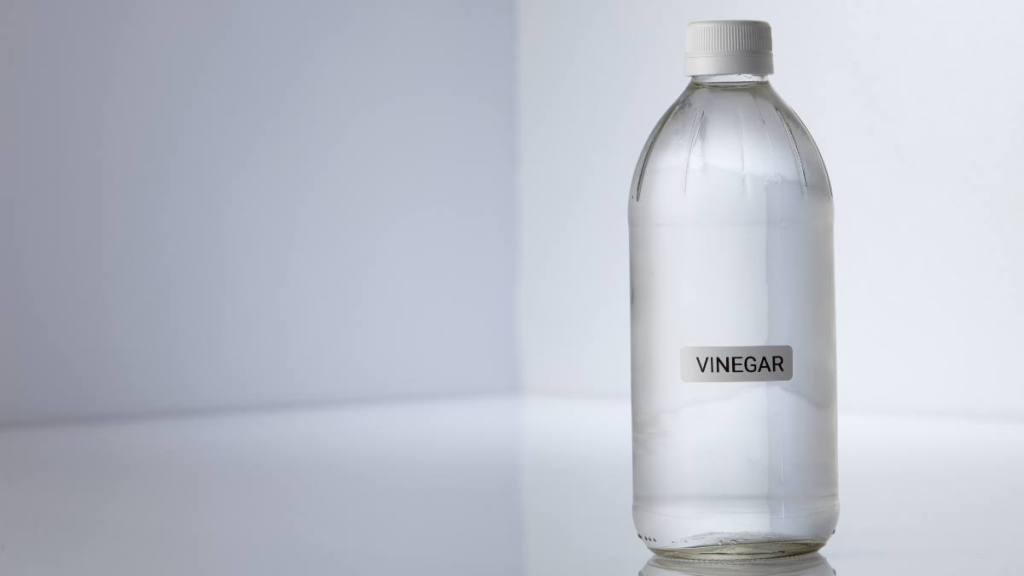
Tackling it with warm, soapy water and a bottle brush can also do the trick, as can a fizzy mixture of baking soda and hot water. “Thoroughly scrub the interior walls of the tumbler and separate the lid components to reach crevices where moisture gets trapped,” advises Dills.
And if your cup shows visible mold spots? Time to throw it out and get a new one.
What about those straws? Clean them daily like you would clean the rest of the bottle. “Run hot water or white distilled vinegar with hot water through the straws, rinse and air dry,” says Dr. Nuzzo. While there’s no hard and fast rule when it comes to replacing the straws, if it’s stained, cracked or gunked up beyond repair, purchase a new one and/or switch to a stainless steel one that comes with a special cleaning brush.
Related: 13 Brilliant Uses For White Vinegar Guaranteed To Make Your Life Easier
For more on how to outsmart sneaky germs, click through the links below!
Your Toothbrush Is Teeming With Bacteria: Dentists Share How to Clean It
MDs Share 8 Surprising Germ Hot Spots In Your Home (The Toilet Isn’t One of Them!)


